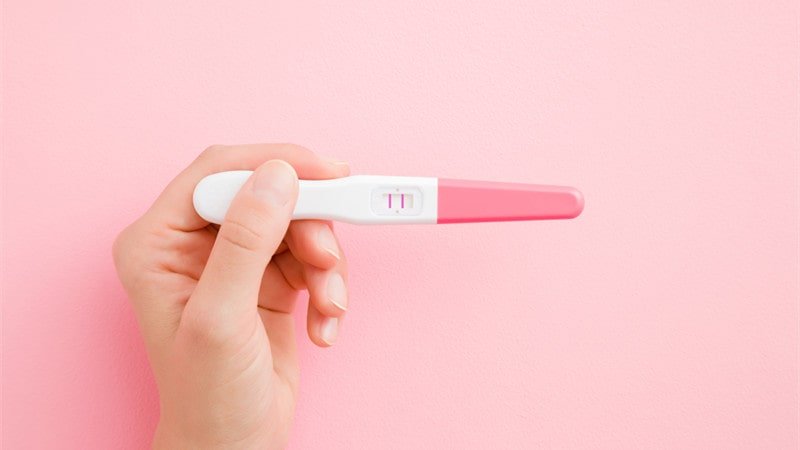When having unprotected heterosexual intercourse, a woman has a high chance of becoming pregnant. Some women panic when they see a positive pregnancy test result, and it’s only natural if you don’t want a baby yet.
However, sometimes pregnancy tests can show false positive results. But how common are false positives? What caused it in the first place?
A typical pregnancy test does one thing — finds out whether a woman has human chorionic gonadotropin, or hCG, in her urine. hCG is also known as the pregnancy hormone; once a woman’s egg is fertilized, hCG production in the body increases rapidly. So, if there is hCG in the urine, the woman is pregnant, right?
Well, it’s not that simple. To answer the question of how common false positives are, let’s look at a list of possible causes for false positive results.
How Common Are False Positives: Top 7 Causes of Positive Results
ectopic pregnancy
Sometimes, the fertilized egg manages to leave the uterus. It can be in the cervix, fallopian tubes, ovaries, or abdomen. This is called an ectopic pregnancy; during this process, the woman’s body still produces hCG, even though the egg cannot thrive in its current environment.
An ectopic pregnancy can have extremely adverse effects on your health. It is important to seek medical help (for yourself or your partner) if you notice any of the following symptoms:
• Severe pain in the pelvis or abdomen
• Discover
• bleeding
• Dizziness
• fainting
• rectal pressure
biochemical pregnancy
When a fertilized egg fails to grow or implant, a woman is going through a process called a biochemical pregnancy. Her eggs would still produce more hCG and show false positive results on the test, but the eggs would not start developing into fetuses.
These types of pregnancies are so common that science has not been able to figure out why they occur. Most women have this diagnosis because they were tested too early. If you wait at least a week, the hCG will likely disappear from your system (or your loved one’s) and the test will come back negative.
recent miscarriage or miscarriage
Both miscarriage and miscarriage will show false positive results for the same reason. Even after the woman loses the fertilized egg, her body continues to produce hCG for the next six weeks or so. Naturally, the amount of this hormone tapers off, but if you try to conceive too soon after a miscarriage or miscarriage, you are more likely to get a false positive result on the test.
drug
Interestingly, some medications can trigger false positive pregnancy results. The most common are synthetic hCG trigger shots, often prescribed as fertility drugs, which include:
• professor
• Ovid
• Pregnant
• Novarel
As their descriptors suggest, these drugs boost hCG production in women. With that in mind, they are definitely producing more hormones and it will show up in tests.
However, there are other drugs that can have similar effects. They include certain antihistamines, diuretics, anticonvulsants, antipsychotics, anxiety or Parkinson’s drugs, and methadone.
various medical conditions
There are a variety of health conditions that can cause hormonal imbalances and trigger a positive pregnancy test result. By far the most common health problems are urinary tract infections, kidney disease and ovarian cysts. Ovarian cancer is also a common culprit of false positives. Although this rarely happens, problems with the pituitary gland can also cause too much hCG to be formed.
evaporation line
Sometimes the test itself can be the reason for your difficulties. Usually, a pregnancy test stick will show two lines indicating pregnancy and one line indicating the opposite. But as the urine evaporates from the test, a thin line of evaporation is likely to form. There are a lot of women who mistake this line for an important pregnancy indicator, and I totally understand why.
There is a simple solution to this problem. You just need to buy a different test and try again. If possible, use messages such as “pregnant” and “not pregnant” in place of lines. It turns out that these tests are much less likely to cause confusion and false positives.
user error
How common are false positives when asked? Few thought they could be responsible for the erroneous results. Many users either took the test too early or did it incorrectly. So, ladies, here are some tips on how to take a pregnancy test:
• Do not take it early in your cycle
• Take it in the morning, when your urine is not diluted with water
• Absolutely ensure that tests are not out of date
• Don’t leave the test strip in your urine too long (or not long enough)
• Read the manual carefully in case anything is missed
How common are false positives and what to do when you find them?
In general, false positives are less common than true positives. But always consult a medical professional when you or your partner feel pregnant. Make sure to discuss every important detail (conception date, how long until the missing period, etc.)
How Common Are False Positives: Final Thoughts
If there should be one takeaway from this post, it’s this: when it comes to the human body, anything is possible. A woman can be pregnant and not know it, but she can also pretend to be pregnant only to find out that it is not. But no matter what happens, always remember to discuss pregnancy with a medical professional. This way, you can learn all about the matter.
So, when it comes down to it, how common are false positives? Well, it’s common enough to warrant writing this article, but so uncommon that most women don’t need to worry about it.
